Posts tagged with Sampling
Here you can find a listing of all posts with the tag Sampling on my page.

Nov 07, 2025 Tutorial
The sampler in Bitwig is a highly versatile tool that allows users to create a wide range of sounds by slicing, stretching, and creatively modulating samples, making it possible to produce entire tracks with just a few devices and effects. The guide demonstrates practical techniques for syncing drum loops to project tempo, slicing samples, and turning any audio into instruments or pads using modulation and filtering, offering endless creative possibilities without the need for additional plugins. By experimenting with simple recordings and leveraging Bitwig’s modulation system, users can achieve unique and professional results, illustrating the sampler’s power for music production.

Jun 20, 2025 Tutorial
In this video, I revisit the Atlas drum sampler plugin after previously favoring XO, exploring its features for organizing and quickly generating drum and bass loops through randomized sample kits and advanced sequencing options. I demonstrate how you can easily map samples from different folders, use the sequencer for creative patterns, and process individual drum elements in Bitwig for powerful sound design and layering. By sharing my workflow and tips, I encourage you to try Atlas for fast experimentation and creative beat-making in your own productions.
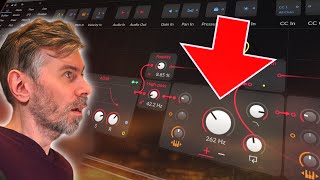
Jan 20, 2025 Tutorial
In this video, I explain how the order and rhythm of overtones are crucial in determining whether a sound is perceived as a single note or a chord. By using devices like the comb filter, we can manipulate and organize overtones to create harmonious sounds when playing chords. I demonstrate various techniques for improving sound quality and harmony, especially when using noise samples and synthesizers, and show how these approaches can lead to better-sounding pads and textures.
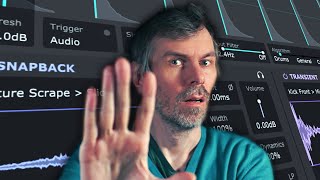
Oct 27, 2024 Tutorial
In this video, I discuss the Snapback plugin by Cableguys, which detects drum triggers to layer samples on top or in front of drum sounds, and compare it to a Bitwig Studio native solution. I demonstrate how to use the Bitwig Replacer device to achieve similar results, offering a free preset for viewers to experiment with. Ultimately, I highlight the Snapback plugin's intuitive interface and quality sample selection as key value points.
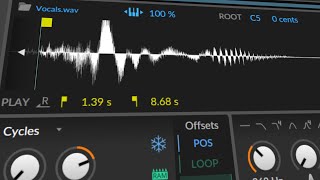
Jul 08, 2024 Tutorial
In this video, I demonstrate how to generate tonal sounds from random noise using the Cycles mode in my sampler. By manipulating the grain size and key tracking, I can create different pitches and waveforms. This technique allows for easy and flexible sound design, making it perfect for creating ambient pads and other tonal sounds.

Jun 17, 2024 Tutorial
In this video, I explore creating new sounds using the Bitwig Grid. I start by sampling different instruments and then manipulate the samples using various modules such as triggers, quantizers, and modulation. The result is a unique and atmospheric ambient sound that can be further customized and experimented with.
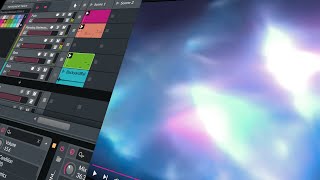
Apr 17, 2024 Tutorial
In this video, I share my process for creating ambient music using samples from YouTube. I demonstrate how to record audio from the Windows output and use it in a granular sampler to create unique pad sounds. I also incorporate a minimal beat, piano melodies, and effects like reverb and delay to build a chill-out tune.
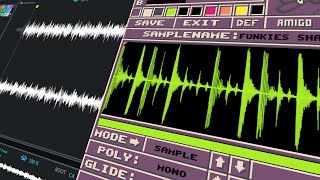
Apr 15, 2024 Tutorial
In this video, I explain how to replicate some of the features of the Amiga sampler in Bitwig Studio. The Amiga computer in the 90s had limitations in terms of sampling quality and space, resulting in a distinct sound with artifacts. By using the bit reduction, sampling rate, and key tracking features in Bitwig Studio, you can achieve a similar sound and even simulate slicing and stretch modes.
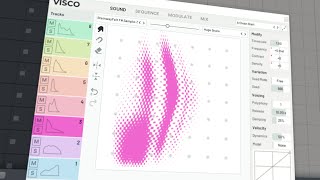
Mar 25, 2024 Tutorial
In this video, I discuss Visco, a new drum sampler that was released five days ago. It is a unique drum sampler that divides the samples into the spectral domain and allows for morphing and twisting using modifiers. This tool is perfect for sound design and specifically designed for percussive sounds.
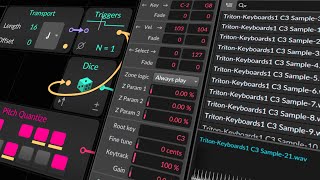
Mar 01, 2024 Tutorial
In this video, I demonstrate a workflow for creating complex patterns and ambient songs using the Trident synthesizer. By sampling different presets from the bell and mallet category, slicing them, and renaming the files, I can load them into a sampler to create a unique and dynamic sound. This method allows for easy experimentation and can be applied to various genres, from ambient to percussion.
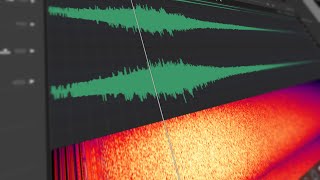
Jan 10, 2024 Tutorial
In this video, I share my process of capturing impulse responses inside Bitwig Studio. I demonstrate how to use a test-tone device to generate the desired impulses, export and edit them in an audio editor, and then use a sampler and convolution device in Bitwig Studio to create unique reverbs. I also explain the importance of combining convolution reverbs with algorithmic reverbs for a more dynamic and realistic sound.
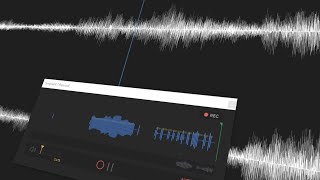
Jan 09, 2024 Tutorial
In this video, I demonstrate an interesting technique for creating ambient pad sounds using the sampler in Bitwig. I start by recording sample material from old synthesizers and then load them into the sampler. By utilizing cycles mode, voice stacking, and modulation, I am able to create unique and evolving pad sounds with ease.
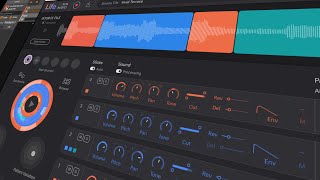
Dec 05, 2023 Tutorial
In this video, I introduce the new VST plugin called Live by XLN Audio. It allows users to find slices within audio material and create percussion loops using different patterns. The plugin offers features such as auto slicing, denoise option, pattern variation, and the ability to drag in samples or record directly from the iPhone app.
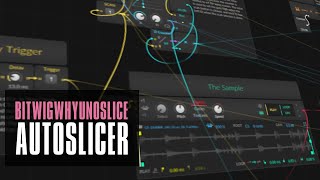
Nov 07, 2023 Tutorial
In this video, I discuss the limitations of the sampling mode in Bitwig Studio, particularly the lack of a slicing feature. To overcome this, I demonstrate how I created a custom slicer within the Bitwig Grid, allowing for easy mapping of slices onto the MIDI keyboard. I provide an overview of the patch and explain the functions of the transient detector, slice mapping, and play triggers.
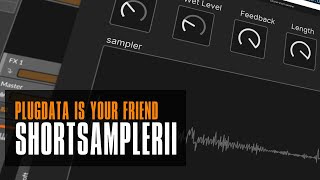
Sep 15, 2023 Tutorial
In this video, I continued working on my sampler or looping station patch inside Plug Data. I made some improvements to make it more dynamic and turned it into a plugin-like interface. First, I addressed the issue of fixed numbers by using the sample rate module to get the current sample rate of the DAW. This allows the patch to adapt to different sample rates. I also used a dynamic variable for the buffer size by using the send and resize commands. This way, the buffer size can be changed based on the desired length of audio to be recorded. Next, I made the fade out delay time dynamic by subtracting 200 milliseconds from the buffer length. I also added a feedback feature to create a decaying audio signal.
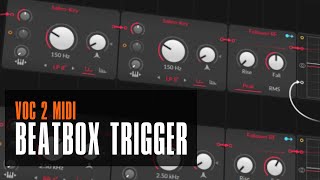
Jun 05, 2023 Tutorial
In this video, I show how to record your microphone and convert it into MIDI notes to trigger random samples in Bitwig Studio. To do this, I use a trigger to trigger the kick drum, snare, and hi-hat samples, and a hardware device to select the microphone input. I also use an auto-leveler with a follower, threshold, and sustainer to amplify the vocals and filter out noise. To separate the sounds, I use a sound key filter with a bandpass, low pass, and high pass, and use logic to exclude certain combinations of triggers. Finally, I use a quantizer in trigger mode to put all the triggers on the grid. Overall, this process requires a lot of tweaking and filtering to find the right sweet spot, but it can be done in Bitwig Studio with some experimentation.
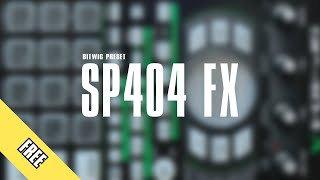
May 20, 2021 Tutorial
In this video, I show how to recreate the magic effect section of an Roland SP404 sampler hardware device in Bitwig Studio. I explain how to make a chain device to contain all of the effects, and then I go through each effect step-by-step. I demonstrate how to create a beat repeater, a bit crusher, an EQ, a delay, a filter, a pitch wobble, and a low fire effect. I also show how to use remote controls to trigger the effects and how to synchronize them to the beat grid. Finally, I provide a free preset to download in the description.

Jul 07, 2019 Tutorial
In this video, I talk about a diatonic transposer that can be used in Bitwig to create chord progressions. By using the diatonic transposer, you can correct wrong notes to the right notes of a scale, making it easier to create chord progressions that stay within a specific scale. I demonstrate how to use the diatonic transposer in Bitwig by choosing a scale and mode, and then using the multi-note function to duplicate the notes to different keys. This allows you to easily find starting chord progressions. I also show how to use the diatonic transposer with an arpeggiator to experiment with chord changes, and how to use it with a bassline by using the note receiver and the arpeggiator. Additionally, I introduce the plugin "Cthulu" which allows you to choose specific notes from a chord to create melody lines. I explain that while diatonic chords can be a good starting point, it's important to break out of the diatonic scale scheme at times to add variation and interest to your compositions. I hope this tutorial provides some ideas for creating interesting melody lines and chord progressions, and I encourage viewers to comment with any questions or tutorial requests.
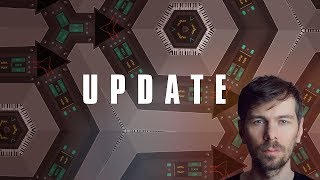
Jun 02, 2019 Tutorial
In this update video, I talk about how I have been busy with my daily job and preparing presets for the release of Bitwig Studio 3.0. I explain that my goal is to have a collection of good sounding presets ready for new users who want to explore what's possible with the grid. I showcase a piano emulation I created using filters and physical modeling synthesis, along with mechanical sounds from a friend's piano. I also introduce a new reverb called Kitsch-Verb and discuss using random modulation to create an organic feel. I share a work-in-progress version of the piano preset on my GitHub repository and provide a link in the description. I also mention that my friend, Skyance, has released a sample pack on a new website called Intimate Noise and I encourage viewers to check it out. Lastly, I ask for feedback on the piano preset and mention that I will be discussing other patches in upcoming videos.
More Tags to choose from:
posts Bitwig FromScratch Tutorial German Talk Skyence articles Guidelines Knowledge PDF Brain Neurosience Webtool Tempo Mixing Harmony bitwig-guides Audio-FX Poly-Grid helpers Chords Scales community-report Community release Polarity Music Bandcamp music-videos Ambient Hardware Jam Drum-and-Bass Mixtape fawm Behringer Moog Retro polarity-music Bitwig-2.0 VST-Plugin Audio-Effects Bitwig-3.0 Presets Sampling Generative Melodies Note-Grid Bitwig-3.2 Modulators Bitwig-3.1 Plugins Preset Sound-Design Replace VST Note-FX Polysynth MPE Roli Melda Bitwig-4.4 MinimalAudio Distortion Midi Arturia Groove Drums Filters FX-Grid Bitwig-4.3.4 Physical-Modeling Eurorack Instrument Arrangement Automation Risers Transitions Audio2Midi OpenSource PlugData Reverb Clever-Audio-Plugin-Clap AI download FM-synths machine-learning oscillators soniccharge Sound-Generator SynPlant Synthesizers Compiler Heavy-Compiler Synth Current Granular-Synthesis Pads Vector XY-Instrument Touch-Designer Video-Edit Visuals Extension Beginners Bitwig-5.1 Glitch Sync Delay Signals xlnaudio additive Sequencer Euclidean Bitwig-5.1.2 No-Grid Stock Finishing-Songs Thoughts Browser Jazz M1 Convolution Polyrhythm Polymeter Clip-Launcher AudioThing Lese Techno Modulation Synthwave Routing Spectral tests paulxstretch Triton Grains Patreon Utility Analogue Oeksound Bitwig-5.1.6 Kilohearts Project Bitwig-1.3.16 Tegeler Wavetable tbproaudio Amiga Bitwig-5.1.7 Trance Bitwig-5.2b1 Theming Giveaway Bitwig-5.2b2 Segments Ableton Bitwig-5.2b5 key-tracking EQ zplane Bitwig-5.2b7 Calculations Markov Shift-Register Bitwig-5.2b8 Bitwig-5.2b10 Voice-Stacks Bitwig-5.2b11 Feedback Dynamics Bitwig-5.2b12 Bitwig-5.2b13 Bitwig-5.2 sonnox dadalife Bitwig-5.2.1 Bitwig-5.2.2 Bitwig-5.2.3 Problems Audio-Tracks reaction EDM Bitwig-5.2.4 Kickdrums fft Software Bitwig-5.2.5 process.audio Impulse-Responses Bitwig-5.3b1 Freq-Shifter Bitwig-5.3b2 Bitwig-5.3b3 Bitwig-5.3b4 StateOfBitwig Bitwig-5.3b5 Mastering ControllerScript Bitwig-5.3.2 openDAW Bitwig-5.3b10 Bitwig-5.3.1 Bitwig-5.3.8 Connect-4-12 GRMTools Waveguide reloop Bitwig-5.3.10 Application Bitwig-6b1 Bitwig-6b2 Bitwig-6b3 bitwig-grid-course bitwig-classic-sounddesign


















